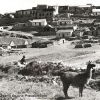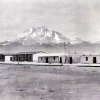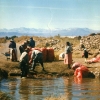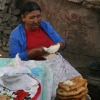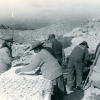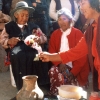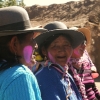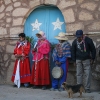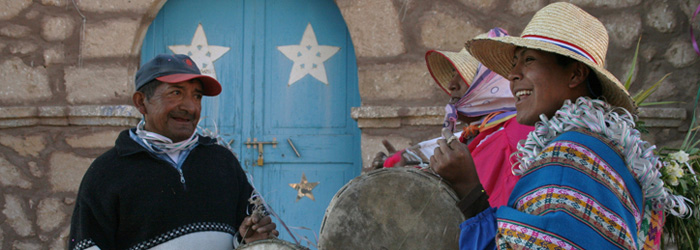History
The Atacameños, Atacamans, or licantay, which in their language means ‘the inhabitants of the territory’, are descendents of the extinct San Pedro culture, which can be traced back at least 1500 years. At the start of the fifteenth century, Inka ruler Túpac Yupanqui conquered their territory, bringing new social and political structures and imposing sun worship as the new religion. The new rulers changed some of the old rituals, exchanging the consumption of hallucinogenic plants for the use of Andean coca leaves.
The Inkas also expanded their road network into the region, connecting the Atacama salt flat with the Altiplano and mountainous territory of what is now northwestern Argentina. The indigenous population resisted the Spanish conquistadors when they first arrived in 1536, and it was not until twenty years later that the region was pacified through a peace treaty signed at Suipacha.
Towards the end of the sixteenth century the Spanish colonial civilization reached the region, bringing evangelization and two controversial customs of the conquistadors: encomiendas, the subjugation of indigenous groups as serfs under a conquistador lord; and mercedes de tierra, huge land grants made to the same Spanish nobles. The town of San Pedro de Atacama became a major political center for the region.
The seventeenth century brought major cultural and technological changes to the people of the Atacama Desert. Mules were introduced as beasts of burden, for example, and due to a number of factors the area underwent progressive depopulation.
In the eighteenth century, against the backdrop of crisis and transformation among Andean indigenous peoples, the messianic uprisings of Inka pretender Túpac Amaru and Tomás Catari occured. These movements spread to the Atacama region under the leadership of Tomás Paniri, member of a local indigenous group.
With independence won from Spain in 1824 the colonial period ended and the Atacama region became part of the Republic of Bolivia. The growth of trade and commerce led to the rapid development of the region, which was annexed by Chile after the War of the Pacific in 1883. With the region now governed from Santiago, its economy grew with the expansion of the mining sector, which took advantage of the region’s mineral wealth to produce first saltpeter (nitrate) and later copper. This produced large scale immigration, the proletarianization of the indigenous peoples of the area, and the usurpation of water resources by the new industries that were springing up.
Today, 21,015 Chileans –3.04% of the country’s total indigenous population—identify themselves as Atacameño or licanantai.

















